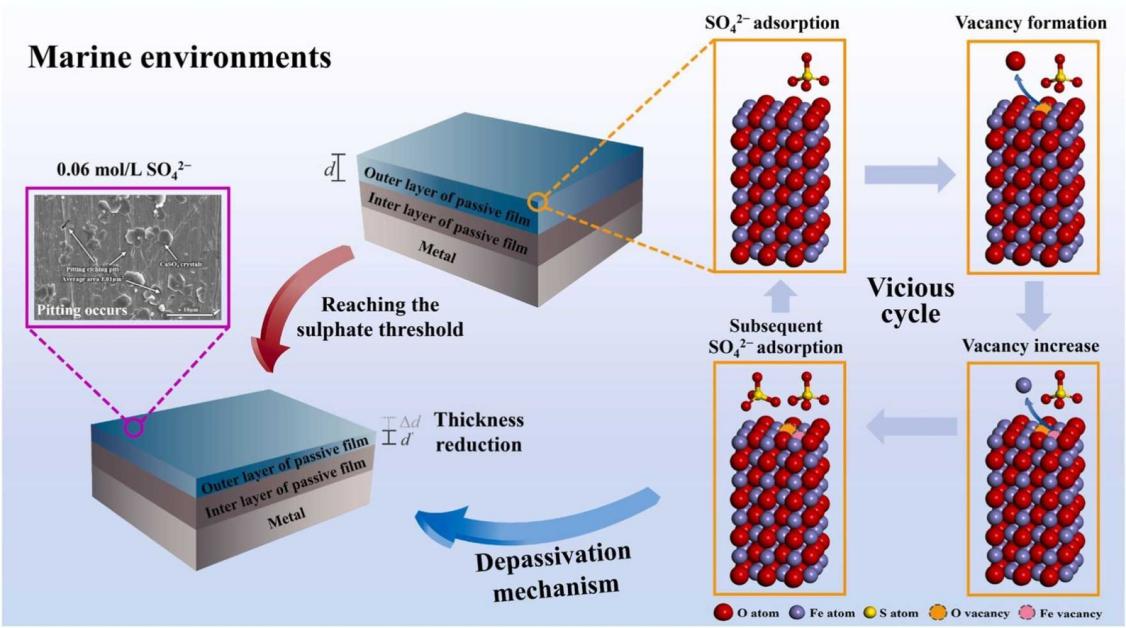Recently, The team of Professor Chen Zheng from SKL is entitled "Mechanism of rebar depassivation in concrete containing sulphate: A vicious cycle between sulphate adsorption and surface vacancy formation" was published in the Corrosion Science.

Sulphate-induced corrosion of rebars has been reported to plague the lifespan of concrete structures. However, the associated mechanism underlying this issue is still unclear and therefore deserves further investigation. To fill in this gap, three electrochemical experiments including OCP, EIS and LPR were conducted in this study, alongside XPS and SEM characterizations. Moreover, a Density Functional Theory (DFT) was adopted to simulate the depassivation behaviour of rebar under the sulphate condition. Taking together, the underlying mechanism was disclosed. The results reveal that the presence of sulphate ions appeared to reduce the thickness of the rebar passive film and the Fe3+/Fe2+ ratio in the outer layer. In addition, the threshold value of [SO42−]/[OH−] to cause the depassivation of rebar was experimentally found about 1.26–1.51 in the saturated Ca(OH)2 solution. Further, the pristine and vacancy-contained α-Fe2O3 (001) surfaces were chosen respectively, to simulate the passive film surface surrounding rebars via DFT. It was found that the SO42− adsorption boosted the formation of surface vacancy, and compared to the pristine surface, the increase in SO42− coverage also promoted the ensuing formation of Fe vacancy on the O vacancy-contained surface. Then, the Fe-O pair vacancy was so formed, and in turn, boosted the following adsorption of SO42− on the passive film of rebars. Combining the experimental results and DFT simulation, the vicious cycle is believed to exist during the sulphate-induced depassivation of rebar, specifically composed of (i) the adsorption of SO42−, (ii) the vacancy formation and increase, and (iii) the progressively enhanced adsorption of SO42−.